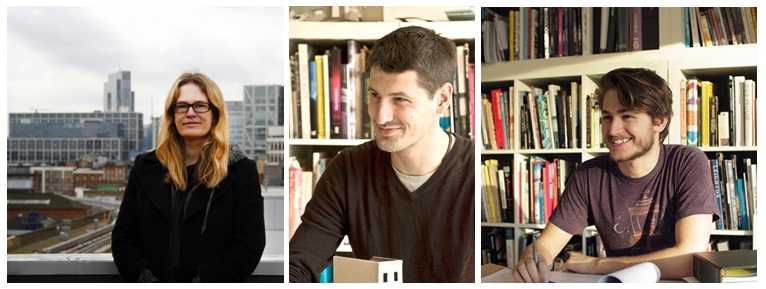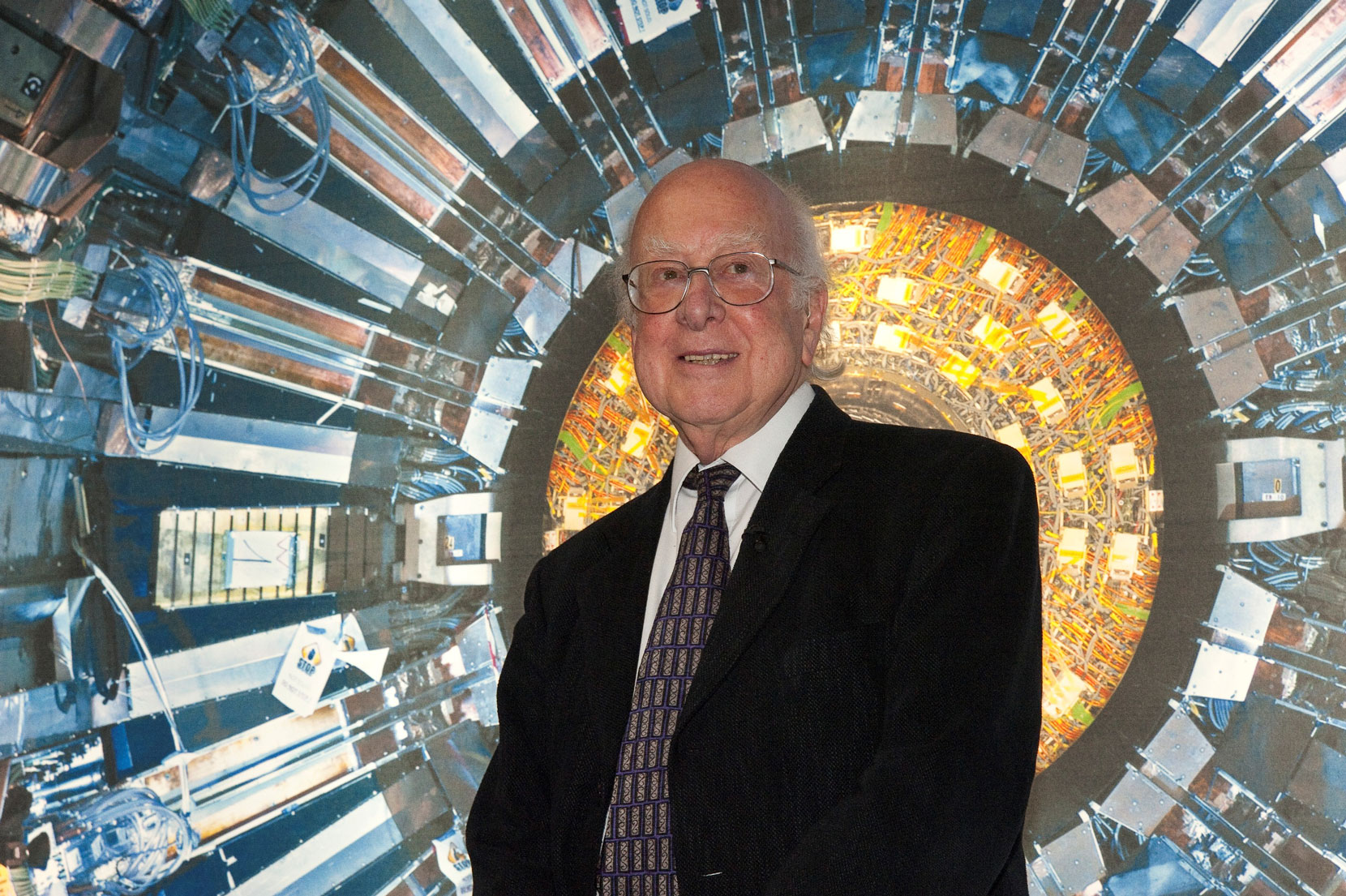We sat down with Pippa Nissen from Nissen Richards Studio to talk about her team’s work on our Collider exhibition.

Can you tell our readers a little about NISSEN RICHARDS studio and the kinds of projects you work on?
We are a bit unusual as a design practice as we work in different sectors; architecture, theatre and exhibition. We love the way that they have slightly different rhythms and processes that all feed on each other. Exhibition design sits nicely between architecture and theatre; it’s about the space and form of different spaces (architecture), but ultimately is about a visitor experience in a timeline across these (theatre).
You went out to CERN several times for the Collider exhibition, what was your impression of the place?
We were completely bowled over by CERN – it was extraordinary as well as full of the ordinary. The sheer size and aesthetic was beautiful – both above ground and below. In the corridors and the warehouses that you arrive in – it felt as if everything was frozen in time from somewhere around 1970 with an austere and functional Swiss graphic language thrown in.
Below ground was like a science fiction film, or being in a giant Ferrari engine – stunningly beautiful and utterly functional.
We also loved the fact that people led normal lives that went on while they were working on such mind-blowing things; and how these clashed unexpectedly. One scientist for example had his kitchen organised so that he could still see the operational screens of CERN – so he could be eating breakfast, helping his children with their homework and watching a collision happening.
The humanness of the spaces also shone through – funny posters about the CERN lifestyle (dancing and singing clubs etc) or jokes pinned up next to an equation and technical drawing of the tunnel – how CERN was filled by thousands of people doing their job – all contributing to something cutting edge and important.
We were particularly taken for example by a scribbled note on a wipe board in the control room saying ‘Don’t forget to reset the undulators!’ next to a comic-book style joke cut out from a magazine about scientists.
What approach did you take in the exhibition design?
We had this amazing experience at CERN, being shown around by extraordinary scientists that were passionate about their work but incredibly friendly and clear in their explanations.
We had a real sense of this being a place where everyone was involved for the good of it all – at the forefront of science – like travelling in space, not knowing exactly what they were about to discover, which was incredibly exciting.
It was full of different people, of different nationalities, with conversations moving freely from English to French to Italian etc. It felt like a truly collaborative and non-hierarchical place.
That is what we wanted to capture – and we decided to base the experience for the visitor to the museum on the same idea – as if you were gaining access to these wonderful people and spaces that few get to see.

As a piece of design, I really enjoy the spatial rhythm of the exhibition; it takes you around the exhibition and helps you in what to look at, giving you clues and gestures, how spaces vary and change as you go through.

I also love the graphic language developed by both Finn Ross the video designer (see more of Finn’s photos from his visit to CERN here), and Northover & Brown the 2D designers, which supplements our designs – adding a level of detail in a bold and photographic but abstract way: how the beam of the Collider becomes a character in your journey as a visitor.
There was a very diverse team working on Collider, including people from the worlds of theatre, design, museums and science. What was the development process like?
The “diverse-ness” of the team was hugely enjoyable but also a great challenge. If everyone in the team had been in one room, it could have been quite overwhelming.
There were video designers, lighting designer, sound designer, playwright, costume designers, and actors and there were also other consultants such as graphic designers, conservators, security experts, quantity surveyors, project managers, and of course the scientists and people from CERN.
To find a clear voice we decided to work through workshops; something that we have done before especially in the theatre where we work with many different artists.
This was a very enjoyable process – we would all be together in a room, brainstorm and slowly plot out the visitors’ journey as if we were making a film. We used flipcharts, models, photos, text, films etc that we pinned all round the rooms of various parts of the Science Museum.
Are there any particular highlights during the design process that stand out?
There are so many wonderful moments. But to pick a few; setting up a green screen in the Science Museum while Brian Cox made his cameo; going to the stunning underground spaces of the detectors and filming; and workshop-ing with our playwright and actors in a small rehearsal space in Whitechapel. We all realised that we were creating something quite special.
What has the reaction to the exhibition been?
The day after the exhibition opened we were on tenterhooks and rather perfectly, the Independent Newspaper ran a front-page story with a large picture of Peter Higgs with the headline “Intelligent design: ‘God Particle’ theorist opens sublime exhibition”.

I went straight from the newsagent to the framers and now it has pride of place in our studio. The reaction from the press has been very positive with 5* reviews.
But our greatest praise is from visitors who say that they feel as if they have taken a trip to CERN, and understand both what the people are like, and a bit more about the science behind it.
Are there any other exhibitions/projects that inspired your work on Collider?
It is interesting that the work we talked about the most when making Collider – were theatre projects that we had worked on or we had visited. Ones where the audience moves around between events and their journey is tailored and twisted by using actors, musicians, video, props, and installations.
We have worked on a couple of these kinds of projects for Aldeburgh Festival. On “The Way to the Sea” we took over a village in Suffolk for a week, and staged two musical performances in different locations, while a 500 strong audience walked between locations coming across signs, poetry, actors, props, speakers, and installations.
My most memorable type of exhibition event that sticks in my mind and inspired me to study theatre design in the first place is over 20 years ago in the Clink (before it was developed). The artist Robert Wilson worked with a sound designer to create a series of stories that you wandered through as a visitor, each like exquisite tableau.
There were a series of these kind of events in the late 80’s early 90’s and I spent my student years assisting Hildegard Bechtler on a few of her pioneering projects, where she took over buildings to subvert the theatre and create more of a total experience for the audience from the moment they entered the theatre building. It is tremendously exciting to use this in exhibition design years later.
Do you think that the mixture of theatre and exhibition works?
I think that it really works, and for me it is about helping the visitor engage with the content of exhibitions. In a theatrical setting people can have an emotional sensorial connection – through sound, smell, touch – and once engaged they can spend time to understand and interpret the meaning of the objects or artefacts.
I feel that there is a lot of scope in this – and exhibitions are becoming different to what they used to be. It is now not enough to put some objects in a showcase and write a label – I learn from my own children that they often feel like they need a way in when visiting museums.
Ultimately it is all about the objects as they are the authentic elements. However we can help with giving them meaning through designing people’s experience.
We will continue to use elements of theatre in our work, and enjoy the relationship between what is real with its own set of history, and what we are adding to allow you in.
The Collider exhibition runs at the Science Museum until 5 May 2014 (tickets can be booked here). The exhibition will then open at the Museum of Science and Industry in Manchester from May 23 – September 28 2014 (tickets available soon here).